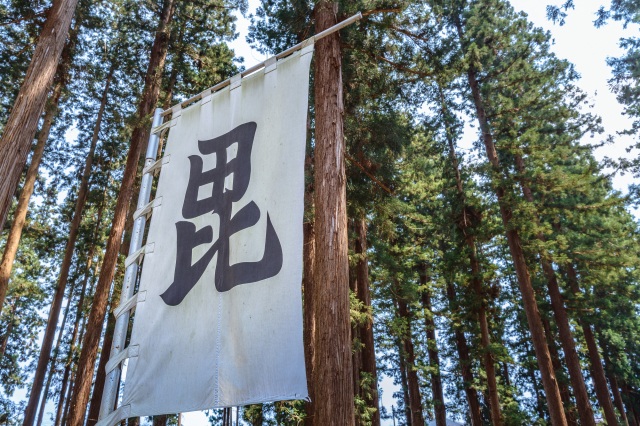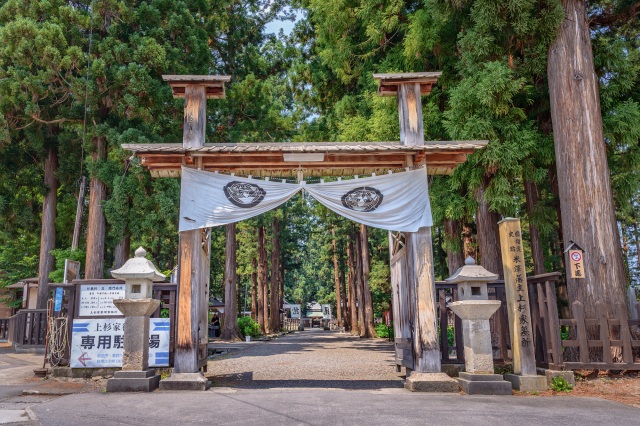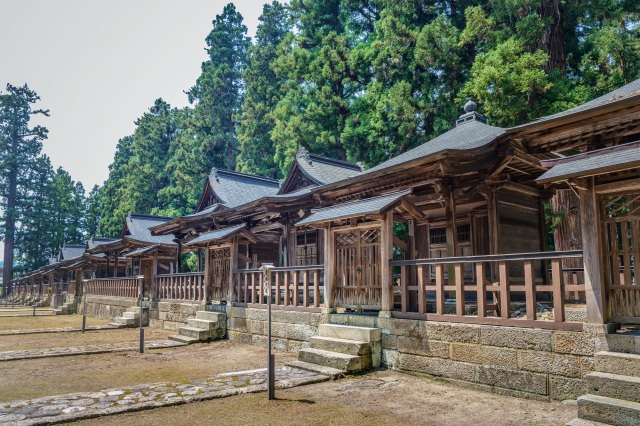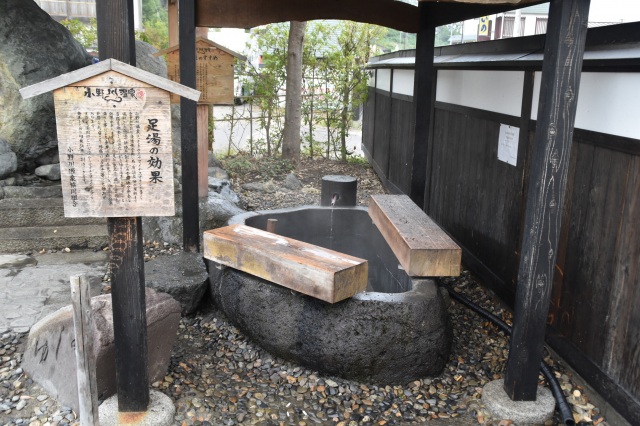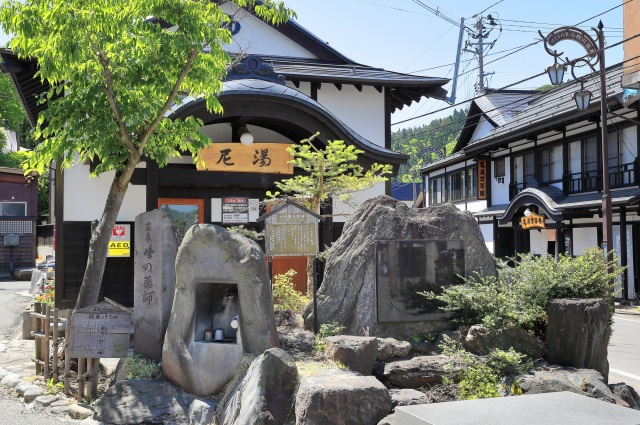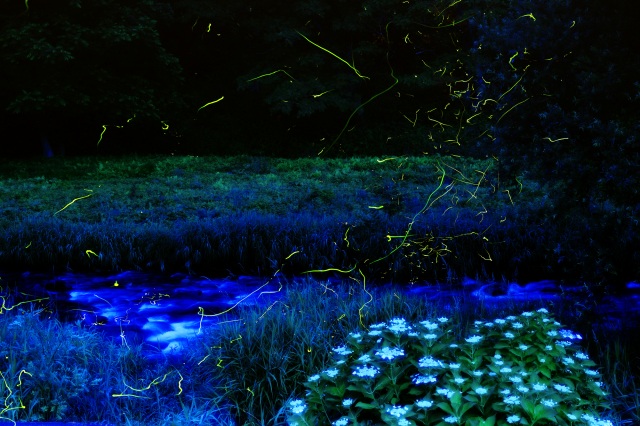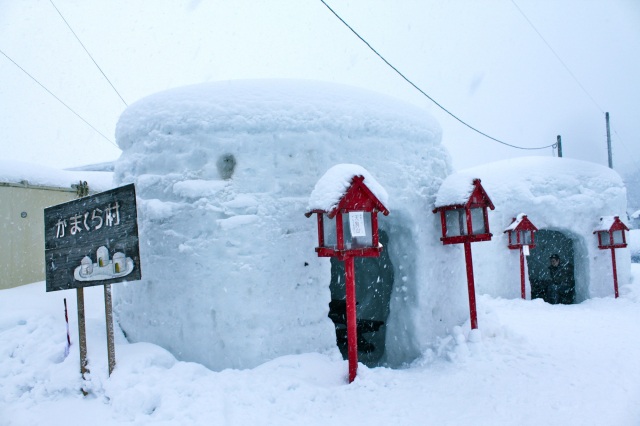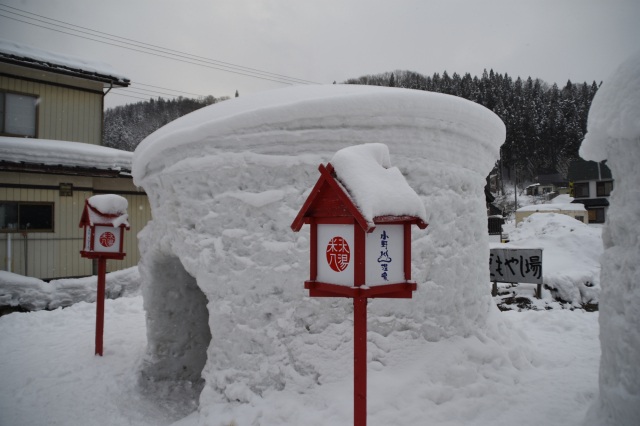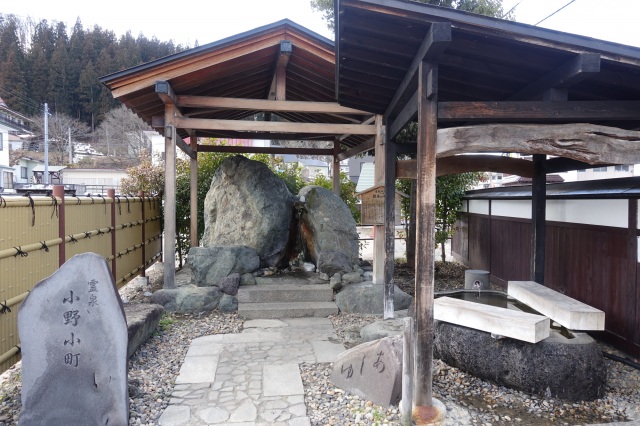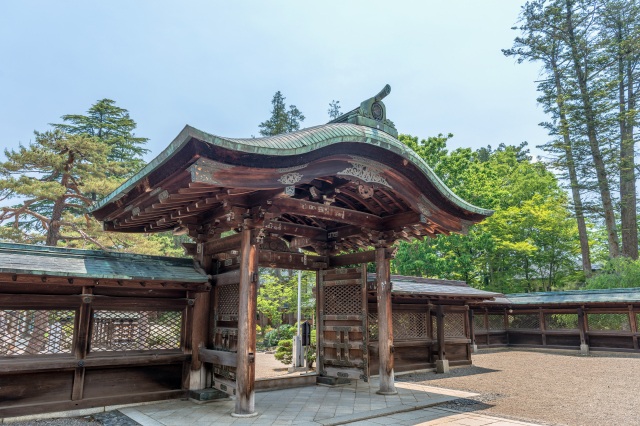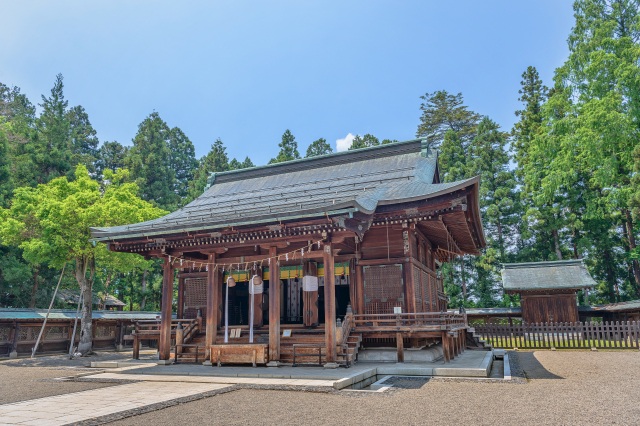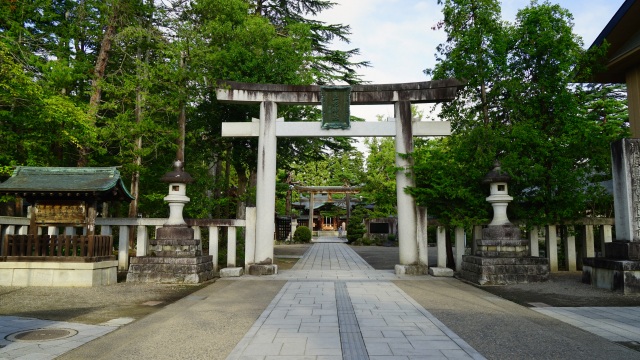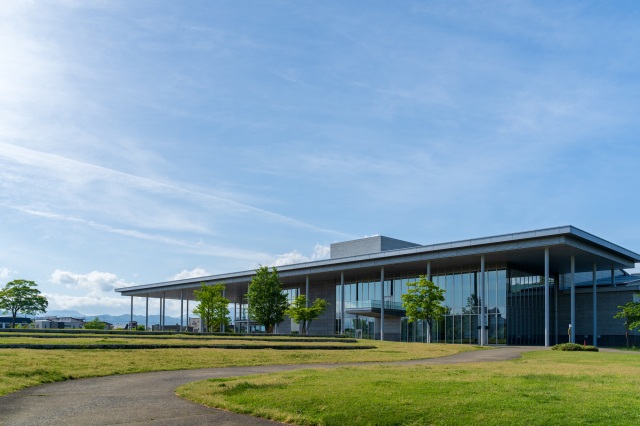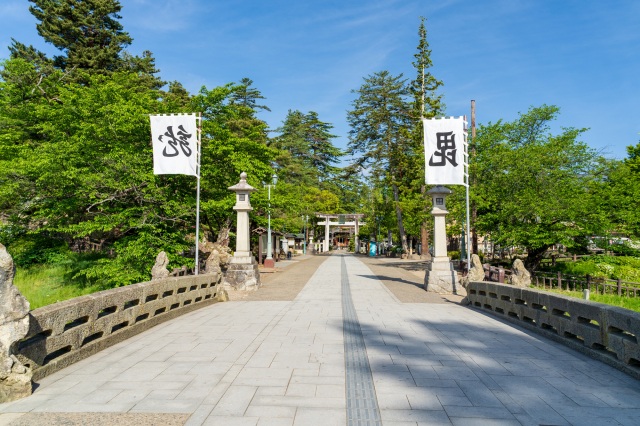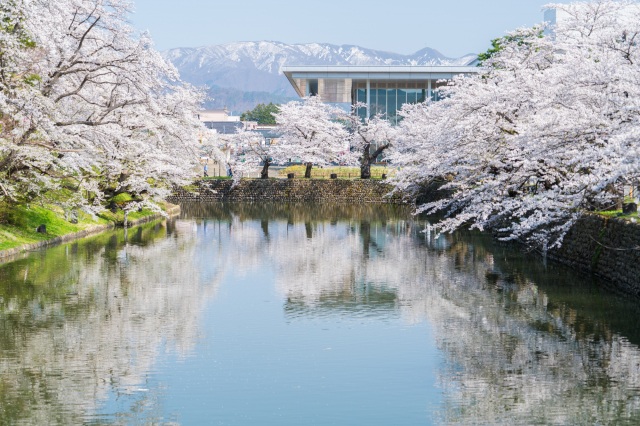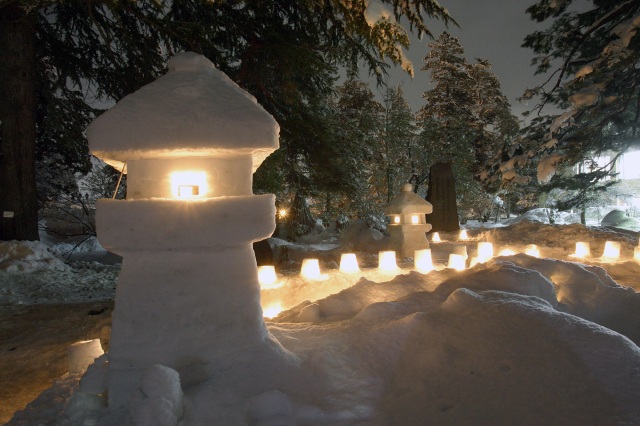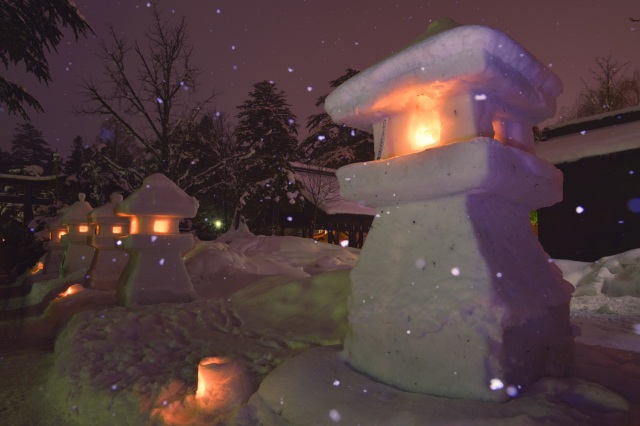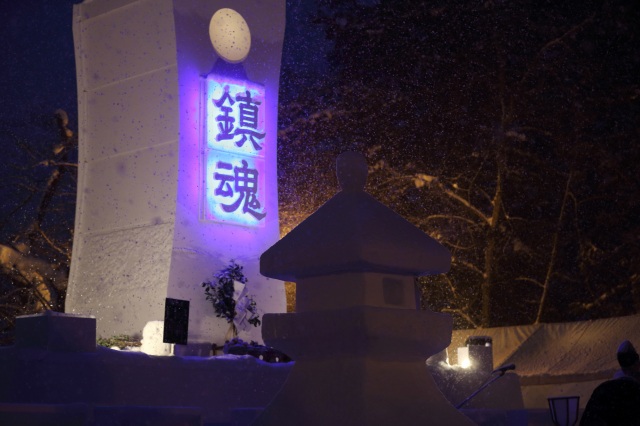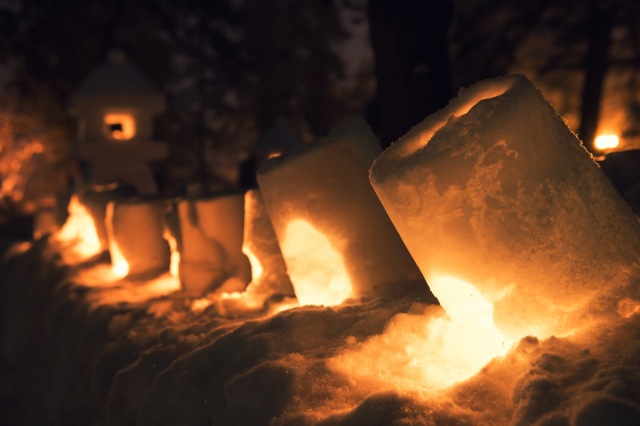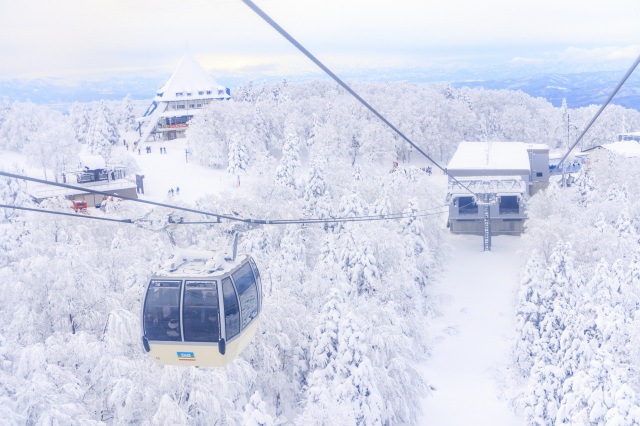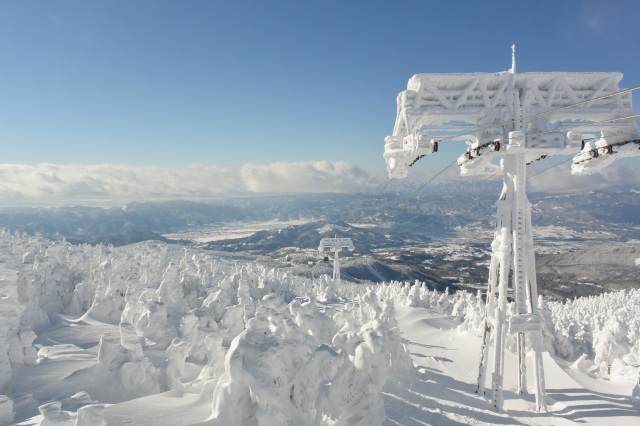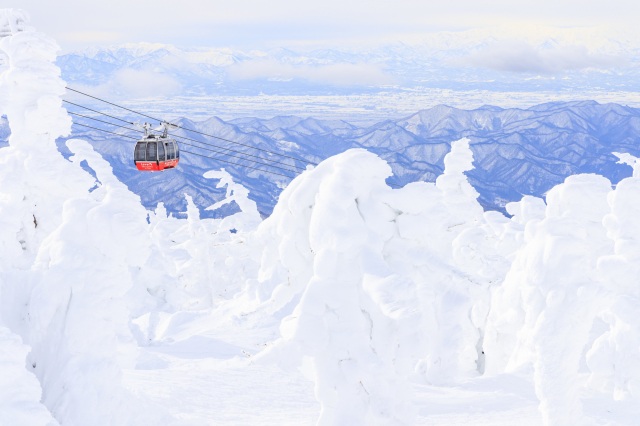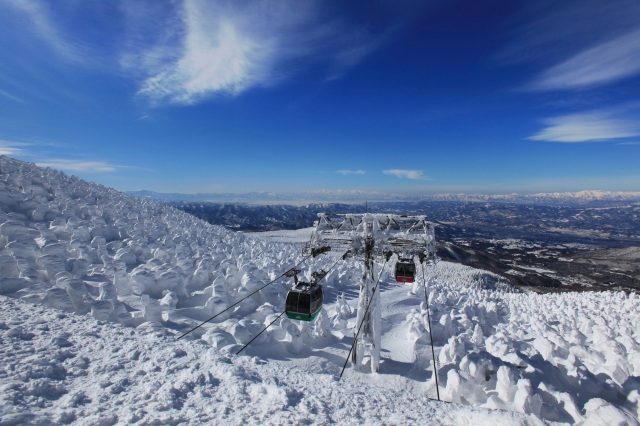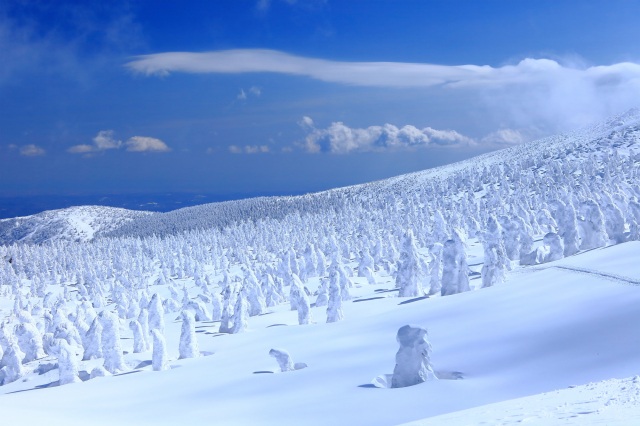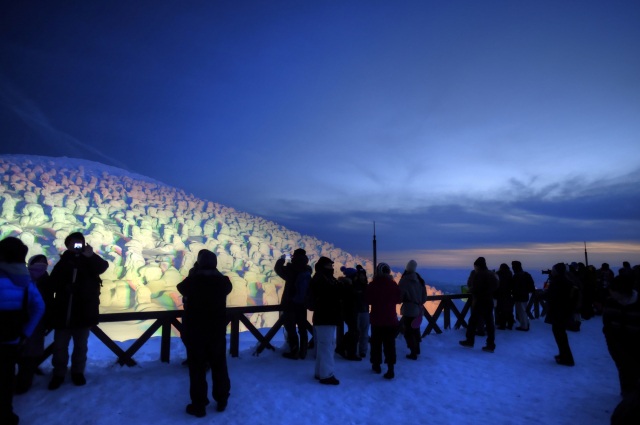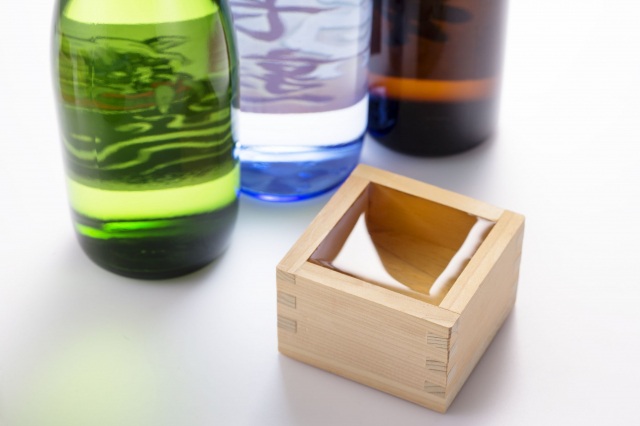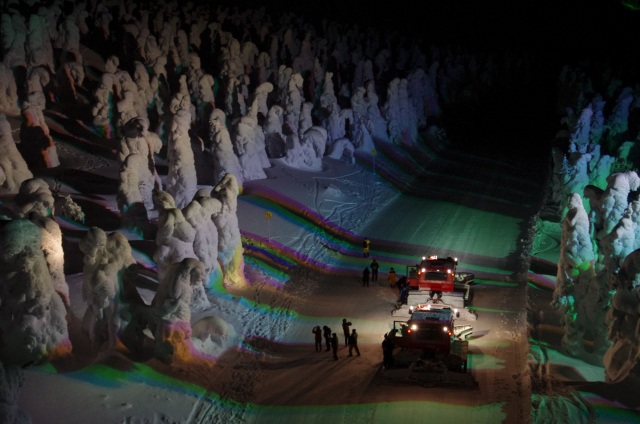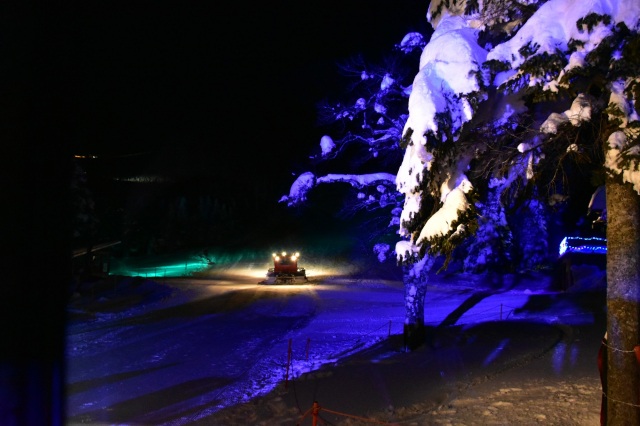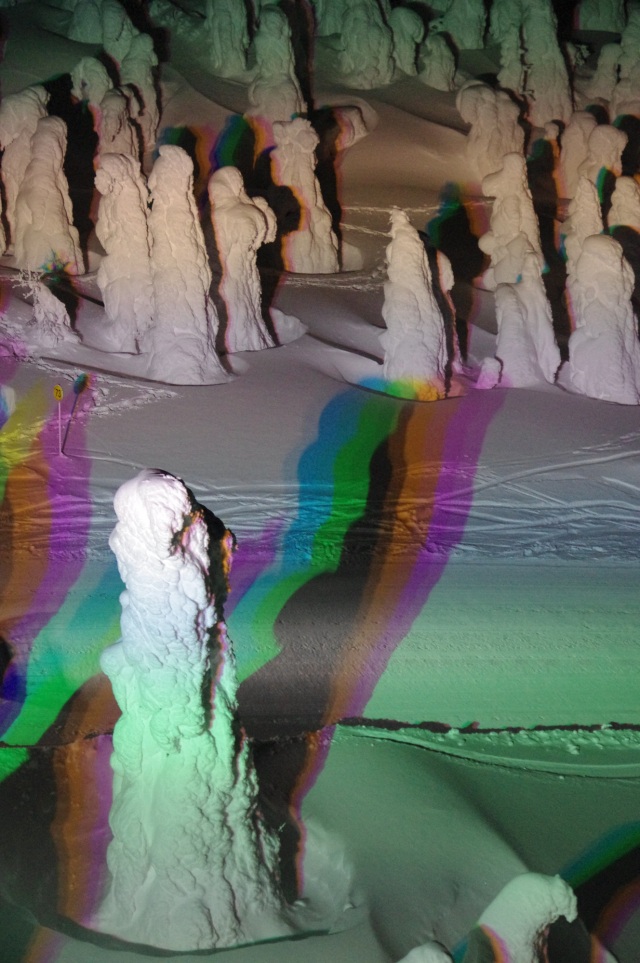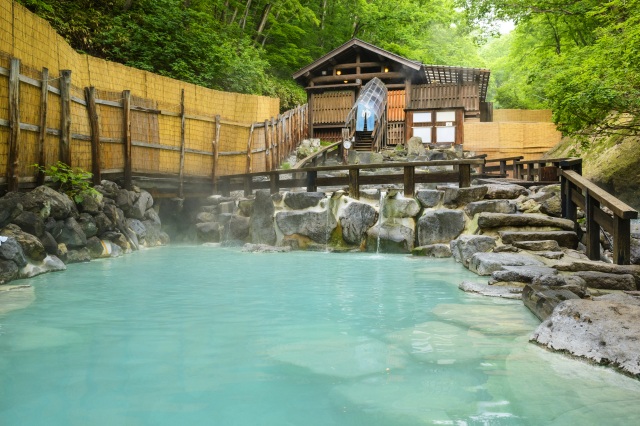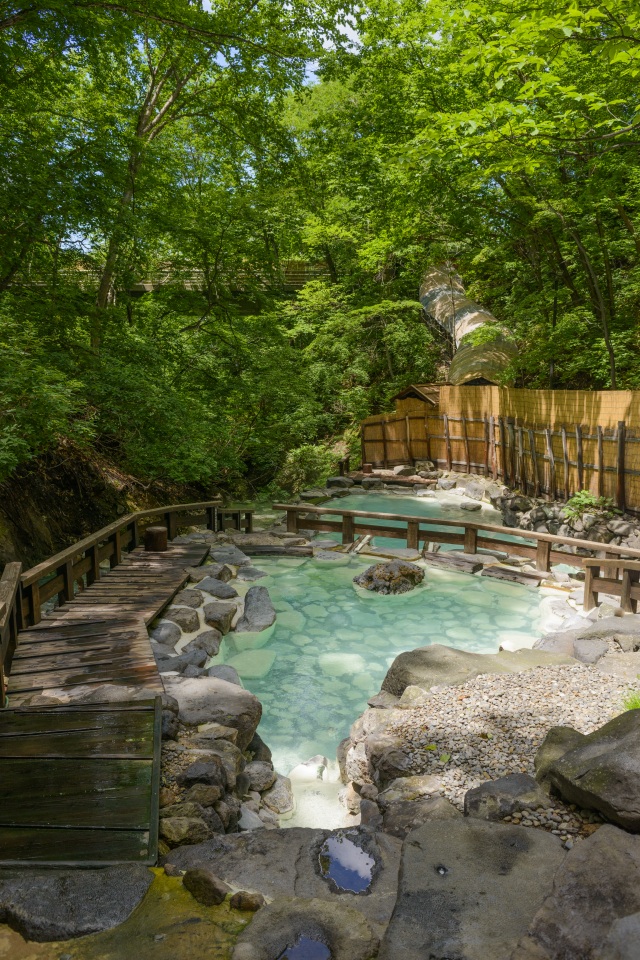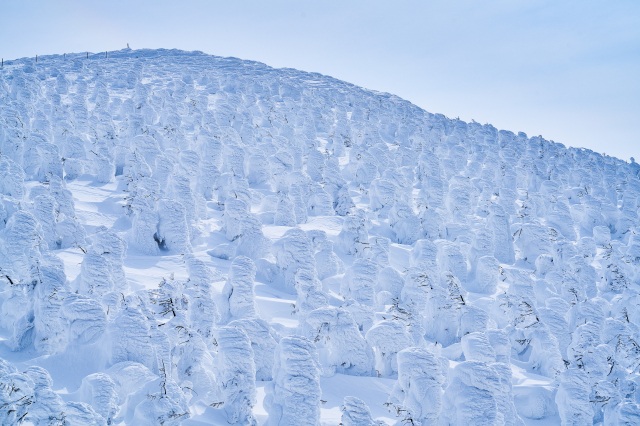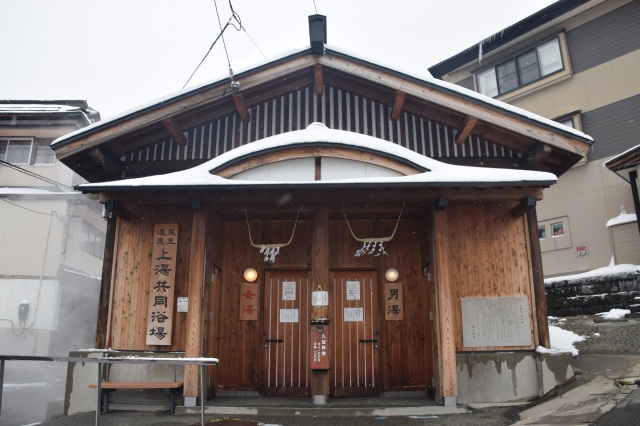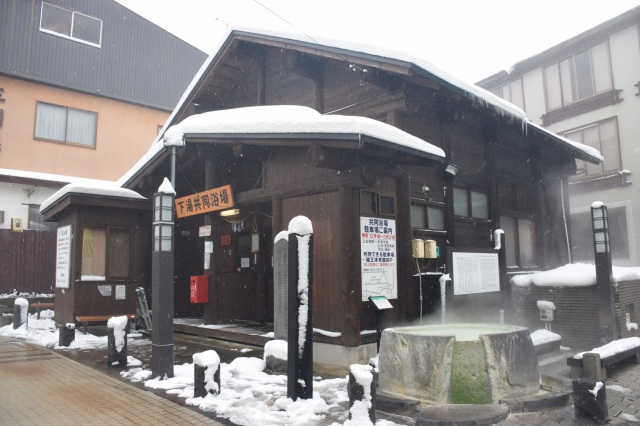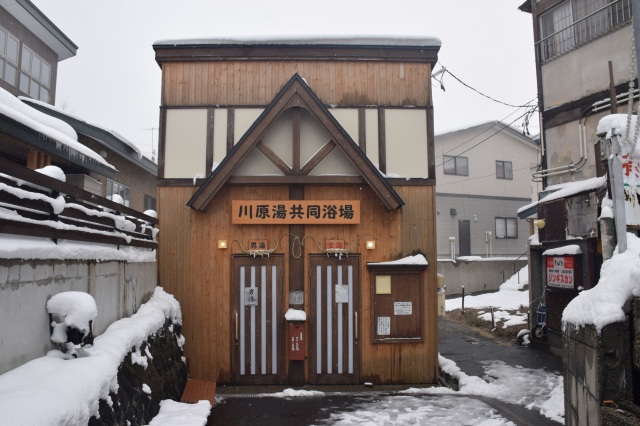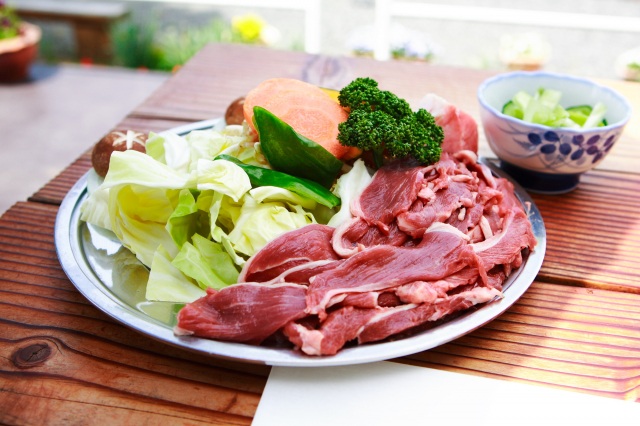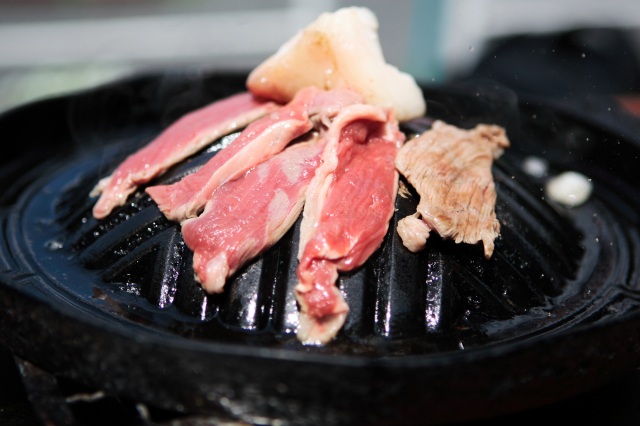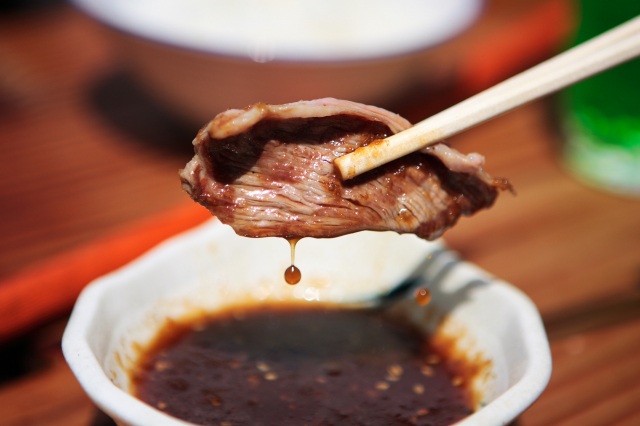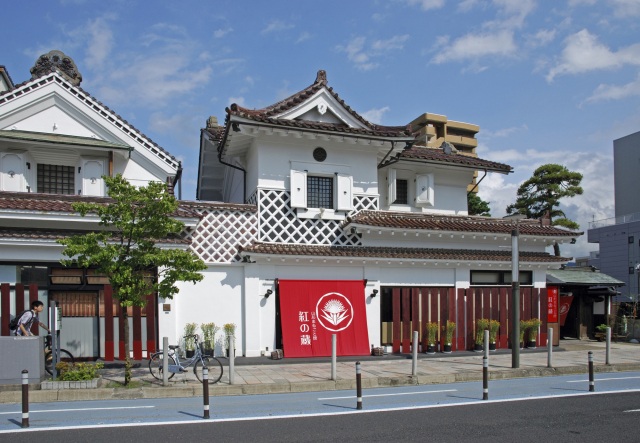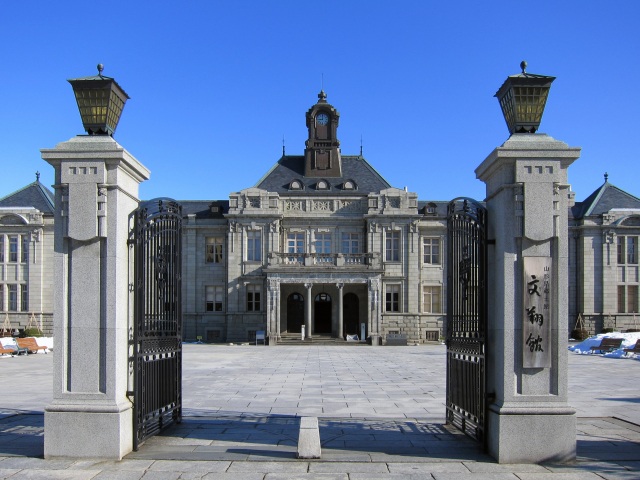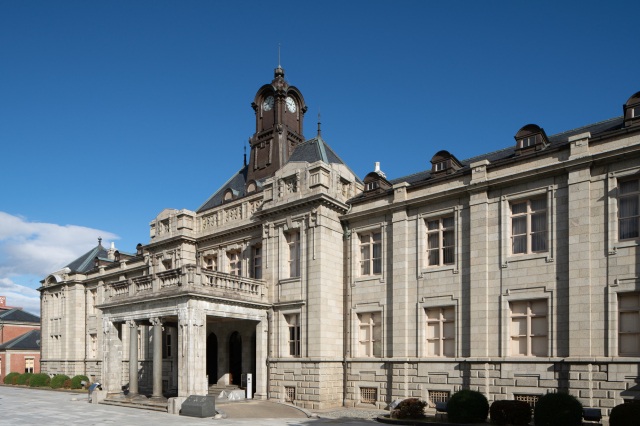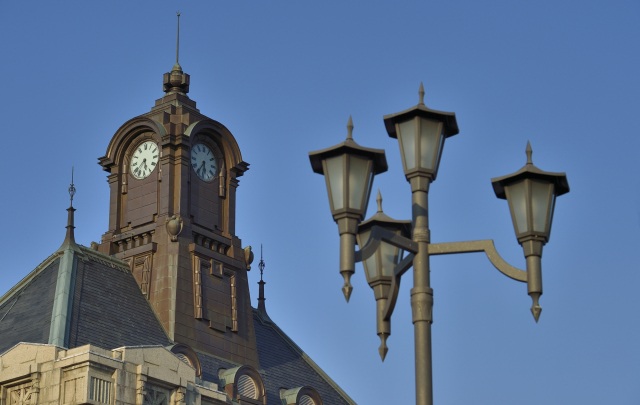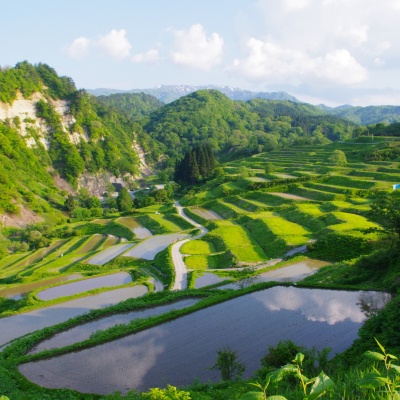Fully enjoy winter with the Snow Lantern Festival and stunning Juhyo (frost-covered trees)
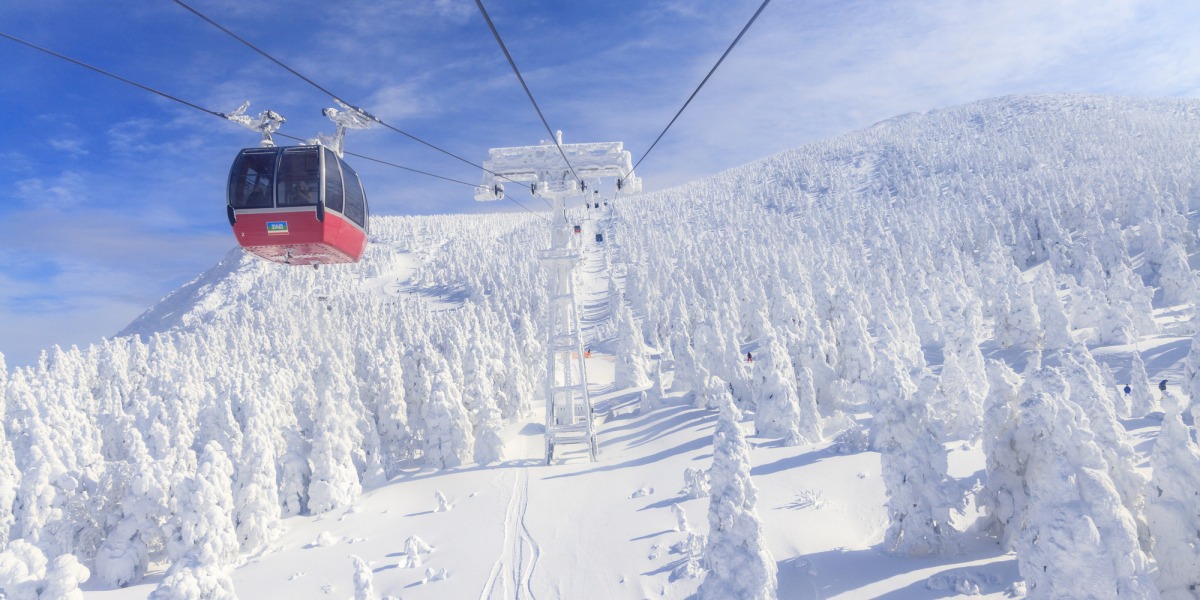
- Suggested Time
- 3 days / 2 nights
- Transport Options
- Bus,Train
Yamagata is full of highlights in winter! Here are some plans to fully enjoy Yamagata in winter, including Zao's fascinating Juhyo and the Uesugi Snow Lantern Festival, a major winter event in Yamagata Prefecture.
START
Day1
30 minutes
5 minutes
Uesugi Family Byosho Graves
5 minutes
15 minutes
Onogawa Onsen
Lunch at Onogawa Onsen Kamakura Village
20 minutes
5 minutes
Uesugi Jinja Shrine
Receive some good luck at the shrine of Kenshin Uesugi, one of the most powerful warriors of the civil war period
Uesugi Jinja Shrine was built on the grounds of the former Yonezawa Castle to enshrine Kenshin Uesugi, one of the most powerful warriors of the civil wars of the 15th and 16th centuries. The shrine is believed to bring good luck, academic success and thriving business thanks to Kenshin’s lingering spiritual energy.
Along the approach to the shrine, a pair of battle flags each with a Chinese character flies in the breeze on Maizuru Bridge. One has “Bi” for Bishamonten (also known as Vaisravana, the Buddhist guardian of the north) who Kenshin strongly believed in. The other has “Dragon” for Fudo Myo-o (a wrathful deity) that was used as a signal for rushing at the enemy’s position when Kenshin launched an all-out attack. Kenshin‘s firm religious faith led him to take the two most powerful deities of Buddhism to the battlefields.
History lovers should visit the treasure hall Keishoden which exhibits a number of Important Cultural Properties including relics of the Uesugi clan. There is a famous helmet of Kanetsugu Naoe, a renowned warrior and scholar, marked with the Chinese character for “Love” on display.
The shrine is located in Matsugasaki Park, a popular scenic location when the 200 cherry blossom trees lining the park moats are in bloom from mid to late April. The Yonezawa Uesugi Festival takes place at the shrine and the surrounding area from 29 April to 3 May each year. The festival’s highlights include a procession of over 1,000 shrine-parishioners dressed in extravagant samurai costumes carrying portable shrines known as Uesugi Gyoretsu, and a performance of the Battle of Kawanakajima, the biggest battle of Japan’s civil war era. The Uesugi Snow Lantern Festival takes place at the shrine and Matsugasaki Park on the weekend of the second Saturday of February each year. Over 300 candle-lit snow lanterns and 1,000 snow lamps transform the park into a winter wonderland!
The nearby Matsugasaki Shrine of Yozan Uesugi, known for the saying “where there is a will, there is a way”, also belongs to Uesugi Shrine. Visit both of the shrines for a double dose of luck!
Along the approach to the shrine, a pair of battle flags each with a Chinese character flies in the breeze on Maizuru Bridge. One has “Bi” for Bishamonten (also known as Vaisravana, the Buddhist guardian of the north) who Kenshin strongly believed in. The other has “Dragon” for Fudo Myo-o (a wrathful deity) that was used as a signal for rushing at the enemy’s position when Kenshin launched an all-out attack. Kenshin‘s firm religious faith led him to take the two most powerful deities of Buddhism to the battlefields.
History lovers should visit the treasure hall Keishoden which exhibits a number of Important Cultural Properties including relics of the Uesugi clan. There is a famous helmet of Kanetsugu Naoe, a renowned warrior and scholar, marked with the Chinese character for “Love” on display.
The shrine is located in Matsugasaki Park, a popular scenic location when the 200 cherry blossom trees lining the park moats are in bloom from mid to late April. The Yonezawa Uesugi Festival takes place at the shrine and the surrounding area from 29 April to 3 May each year. The festival’s highlights include a procession of over 1,000 shrine-parishioners dressed in extravagant samurai costumes carrying portable shrines known as Uesugi Gyoretsu, and a performance of the Battle of Kawanakajima, the biggest battle of Japan’s civil war era. The Uesugi Snow Lantern Festival takes place at the shrine and Matsugasaki Park on the weekend of the second Saturday of February each year. Over 300 candle-lit snow lanterns and 1,000 snow lamps transform the park into a winter wonderland!
The nearby Matsugasaki Shrine of Yozan Uesugi, known for the saying “where there is a will, there is a way”, also belongs to Uesugi Shrine. Visit both of the shrines for a double dose of luck!
Denkoku No Mori Yonezawa City Uesugi Museum
Uesugi Snow Lantern Festival
Attracted by the lights of the snow lanterns, you will recollect the good old vestiges of Tohoku in the winter
The Uesugi Snow Lantern Festival is held over two day on the second Saturday and Sunday of February every year. Matsugasaki Park, where Uesugi Shrine that enshrines Uesugi Kenshin is located, is the main venue of this festival. It is a festival distinctive of snowy Yonezawa held with gratitude for the ancestors who built the foundations of peace and a wish for the repose of their souls.
The entire area of the main venue of Matsugasaki Park is lined with approximately 300 snow lanterns and approximately 1,000 snow lamps. The flames light up the candles at night. The orange light that shimmers in the white landscape has a warmth that will make you forget the cold. It creates a fantastic atmosphere. If you wish to light a candle in the venue, head over to the handmade candle experience area. Why don't you make an original candle that is just yours and then light it up in a snow lamp.
After your look around, visit the tent village product exhibition. It will be packed with warm foods like Yonezawa skewered beef, Yonezawa ramen and bulbs of konjac jelly! Warm up your body by savoring the piping hot tasty foods of Yonezawa.
The entire area of the main venue of Matsugasaki Park is lined with approximately 300 snow lanterns and approximately 1,000 snow lamps. The flames light up the candles at night. The orange light that shimmers in the white landscape has a warmth that will make you forget the cold. It creates a fantastic atmosphere. If you wish to light a candle in the venue, head over to the handmade candle experience area. Why don't you make an original candle that is just yours and then light it up in a snow lamp.
After your look around, visit the tent village product exhibition. It will be packed with warm foods like Yonezawa skewered beef, Yonezawa ramen and bulbs of konjac jelly! Warm up your body by savoring the piping hot tasty foods of Yonezawa.
One night in Yonezawa City
During the Uesugi Snow Lantern Festival, snow lanterns and snow paper lanterns are set up all over the city and lit up at night.
Day2
50 minutes
40 minutes
10 minutes
Zao Ropeway
20 minutes
Frost Covered Trees of Zao
Marvel at the fluffy mounds of gigantic Snow Monsters at Zao!
These frost covered trees can only be found in specific regions and are unique in all of Japan. The unique phenomenon is caused by heavy winter storms splashing icy spray onto the trees which then immediately freezes. The layers of frost thicken forming a group of gigantic frost covered trees colloquially known as “Snow Monsters” due to their fluffy appearance. The unique view is said to be a divine creation and can be enjoyed via cable car and snow vehicle.
Spectacular views of the frost covered trees can be seen while taking the two connected cable cars of the Zao Ropeway from Zao Sanroku station to Jizo Sancho station. The breath-taking winter views are a popular spectacle and the cable cars also operate at night when visitors can enjoy the monstrous trees under illumination. The colourfully illuminated view of the trees is otherworldly! Special night tours are also available from the cable car station travelling around the frost covered trees on the new “Night Cruiser” snow vehicle.
Zao Onsen Ski Resort features a “Field of Frost Covered Trees Course” where visitors can enjoy skiing or snowboarding with incredible views of the snow monsters. Zao Onsen is the perfect place to relax after an active day of winter sports.
The frost covered trees can be seen from December to February and are at their peak in February. Be sure to check the latest information when booking these tours as the frosts can vary depending on recent weather conditions.
Spectacular views of the frost covered trees can be seen while taking the two connected cable cars of the Zao Ropeway from Zao Sanroku station to Jizo Sancho station. The breath-taking winter views are a popular spectacle and the cable cars also operate at night when visitors can enjoy the monstrous trees under illumination. The colourfully illuminated view of the trees is otherworldly! Special night tours are also available from the cable car station travelling around the frost covered trees on the new “Night Cruiser” snow vehicle.
Zao Onsen Ski Resort features a “Field of Frost Covered Trees Course” where visitors can enjoy skiing or snowboarding with incredible views of the snow monsters. Zao Onsen is the perfect place to relax after an active day of winter sports.
The frost covered trees can be seen from December to February and are at their peak in February. Be sure to check the latest information when booking these tours as the frosts can vary depending on recent weather conditions.
20 minutes
Yamagata Sake Museum
Rime on trees fantasy corridor tour
Meet one of the world’s largest Snow Monsters
The Juhyo (Snow Monsters) of Zao, which are said to be rare in the world, are a mystic wonder of nature, with the abies(Abies mariesii/Aomoritodomatsu), a member of the conifer family growing in the subalpine zone, covered in blankets of snow and ice. As cloud droplets(supercooled water droplets) within snow clouds come into contact with branches and leaves, they freeze, forming shrimp tail-like shapes, and snow builds up in between the gaps, gradually hardening. As this phenomenon repeats itself, the creation of a masterpiece takes shape.Riding on the specialized new model snow vehicle “Nightcruiser,” equipped with heating, you can experience the night spectacle of the lighted Juhyo.
Stay one night in Zao Onsen
Enjoy a range of winter attractions at this Onsen town – skiing, hot springs and brilliant Juhyo(hoar frosts)!
Zao Onsen features abundant sulphuric hot spring water with strong acidity. The town’s streets are lined with a number of hot spring inns and hotels amid atmospheric spring steams. The hot springs are known by the nicknames of Hime-no-Yu (princesses’ bath) and “Kodomo-no-Yu” (children’s bath) for their beauty and health benefits. The town offers three public baths, Kami-yu, Shimo-yu and Kawara-yu, each of which is reasonably priced (200 yen each). These three baths are located very close to each other and are suitable for Onsen hopping.
The popular Zao Mountain Range is nearby and among the mountains lies the famous Okama Crater, a mystic crater-lake with beautiful green hues of water, an iconic view of Zao during summer.
Winter attractions include the Zao Onsen Ski Resort and the legendary Juhyo(hoar frosts) known as Snow Monsters. Visitors can take a cable car to enjoy views of the Juhyo(hoar frosts) from the top of the ski area in February. The area is illuminated at night when the view of sparkling Juhyo(hoar frosts) is particularly wonderful! Enjoy an active day out in the snow, marvel at the illuminated Juhyo(hoar frosts) in the evening and cap the night off with a relaxing hot spring bath at Zao Onsen!
The popular Zao Mountain Range is nearby and among the mountains lies the famous Okama Crater, a mystic crater-lake with beautiful green hues of water, an iconic view of Zao during summer.
Winter attractions include the Zao Onsen Ski Resort and the legendary Juhyo(hoar frosts) known as Snow Monsters. Visitors can take a cable car to enjoy views of the Juhyo(hoar frosts) from the top of the ski area in February. The area is illuminated at night when the view of sparkling Juhyo(hoar frosts) is particularly wonderful! Enjoy an active day out in the snow, marvel at the illuminated Juhyo(hoar frosts) in the evening and cap the night off with a relaxing hot spring bath at Zao Onsen!
Day3
Stroll around the town of Zao Onsen and visit the hot springs
There are three public bathhouses, footbaths, and day-trip bathing facilities in Zao Onsen town, so why not go hot spring hopping? If you would like to enjoy day-trip bathing at the accommodation facilities, you can buy a "Yumeguri Kokeshi" at the tourist information center attached to the Zao Onsen Bus Terminal, and enjoy hot spring hopping at a special price.
Zao Onsen's famous Jingisukan grilled mutton dish
How about eating Zao Onsen's famous Jingisukan dish for lunch? It features tender lamb with no odor, homemade secret sauce, and Yamagata rice. It's so delicious that you can't help but keep your chopsticks moving.
40 minutes
5 minutes
3 minutes
Beni no Kura
“Yamagata Marugoto-kan Beni-no-kura” has functions of offering French food made from vegetables and fruits grown in Yamagata city, selling fresh and reliable vegetables and fruits grown in Yamagata city, and traditional crafts, planning and holding seasonal events, and giving tourist information. You will be satisfied with our services.
Storehouses in “Beni-no-kura” were owned by a major safflower merchant, Hasegawa family. Based on the idea of creating new value, using advantage of the history and the culture of Yamagata city, our goal is to rediscover and promote value of local resources in Yamagata city, revitalizing downtown of Yamagata city, and strengthening function as a tourist information center.
Storehouses in “Beni-no-kura” were owned by a major safflower merchant, Hasegawa family. Based on the idea of creating new value, using advantage of the history and the culture of Yamagata city, our goal is to rediscover and promote value of local resources in Yamagata city, revitalizing downtown of Yamagata city, and strengthening function as a tourist information center.
5 minutes
3 minutes
Bunshokan
See the luxurious decoration, a nationally designated important cultural property of brick that conveys the romance of Taisho era to the present!
The Yamagata Prefectural Folk Museum (nicknamed "Bunshokan") was built in 1916 (Taisho era 5) and was used as a prefectural government building and a prefectural capitol until 1975 .
It was designated as an Important Cultural Property of Japan in 1984, and over 10 years from 1986 (Showa 61), restoration work was faithfully carried out based on the construction method at that time.it is now open to the public free of charge as yamagata prefecture folk hall (nicknamed "Bunshokan").
The former prefectural government building is a three-story brick building, and the outer wall is covered with stone paste, and it has a profound appearance. The clock tower, which shows its face to the 4 side as the symbol of Bunshokan, is the second oldest in operation in Japan after the Sapporo clock tower. Watchmakers manually manipulate the weight that moves the pendulum once every five days and have been used carefully. Thanks to that, we have continued to tick the time to the present.
The former Prefectural Capitol building is partly brick and has been used as a venue for concerts and other venues when it is not used by prefectural associations from the beginning, and is still used for various events nowadays.
The interior of the building is also decorated with luxurious decorations. The entrance hall where you enter the inside and jump into your eyes first is full of the atmosphere of Western architecture. The stair railings are also decorated, and the landing is a lovely stained glass with a laurel ring decoration motif. On the ceiling of the front of Government Office (now an auditorium) just up the stairs, plaster decorations that shine with the fine skills of craftsmen are restored. Yamagata prefecture's specialties such as safflower and cherries are hidden, so please check and look for them.
Other rooms also have gorgeous decorations such as parquet floors made from a combination of wood and carpets woven in Yamagata. If you have a time, you can enjoy it even more by guided by a guide volunteer (free of charge).
It was designated as an Important Cultural Property of Japan in 1984, and over 10 years from 1986 (Showa 61), restoration work was faithfully carried out based on the construction method at that time.it is now open to the public free of charge as yamagata prefecture folk hall (nicknamed "Bunshokan").
The former prefectural government building is a three-story brick building, and the outer wall is covered with stone paste, and it has a profound appearance. The clock tower, which shows its face to the 4 side as the symbol of Bunshokan, is the second oldest in operation in Japan after the Sapporo clock tower. Watchmakers manually manipulate the weight that moves the pendulum once every five days and have been used carefully. Thanks to that, we have continued to tick the time to the present.
The former Prefectural Capitol building is partly brick and has been used as a venue for concerts and other venues when it is not used by prefectural associations from the beginning, and is still used for various events nowadays.
The interior of the building is also decorated with luxurious decorations. The entrance hall where you enter the inside and jump into your eyes first is full of the atmosphere of Western architecture. The stair railings are also decorated, and the landing is a lovely stained glass with a laurel ring decoration motif. On the ceiling of the front of Government Office (now an auditorium) just up the stairs, plaster decorations that shine with the fine skills of craftsmen are restored. Yamagata prefecture's specialties such as safflower and cherries are hidden, so please check and look for them.
Other rooms also have gorgeous decorations such as parquet floors made from a combination of wood and carpets woven in Yamagata. If you have a time, you can enjoy it even more by guided by a guide volunteer (free of charge).
10 minutes
GOAL
